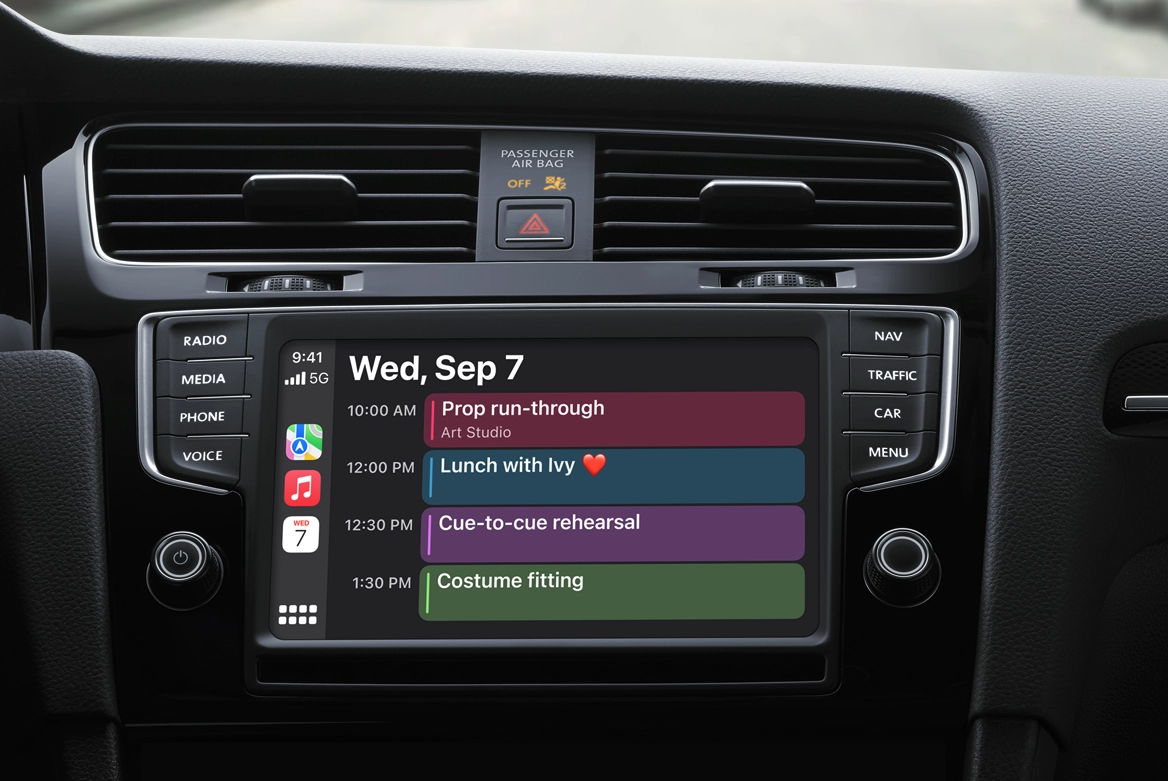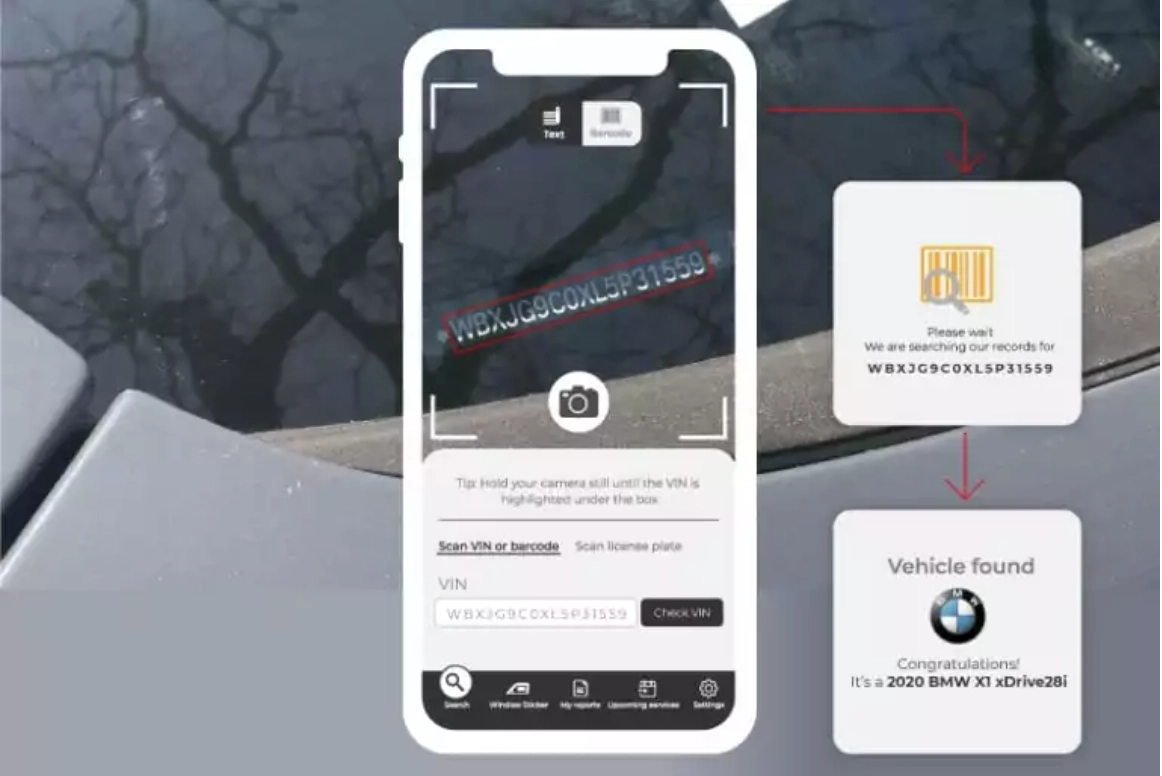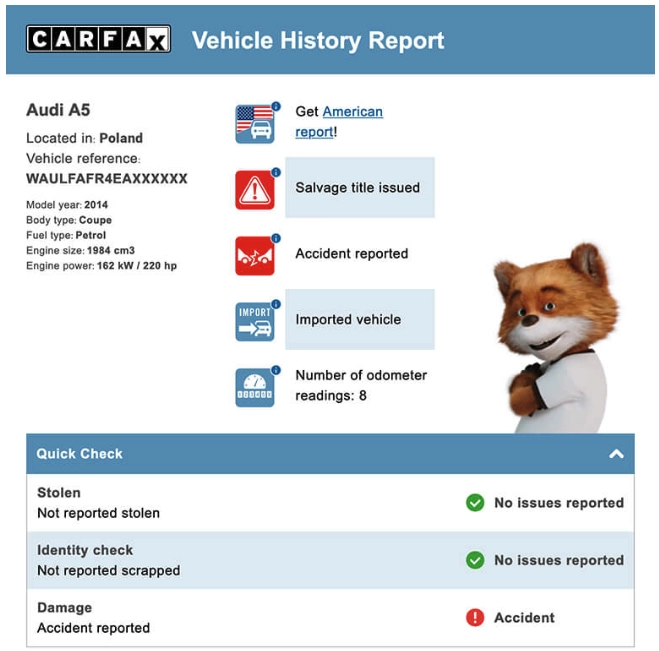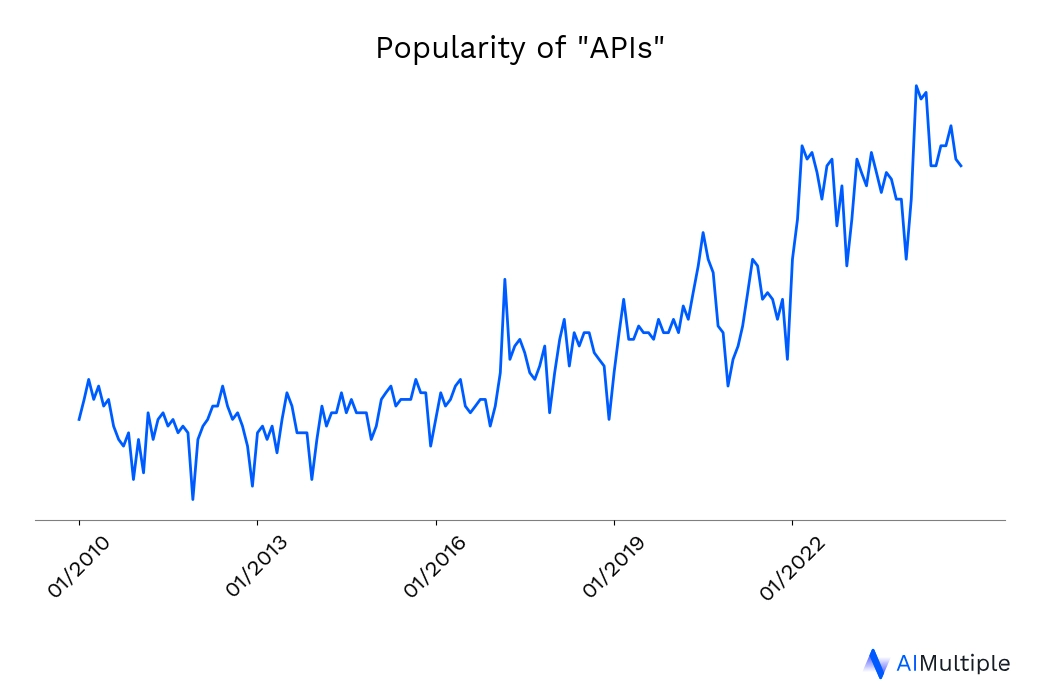Cars have become moving computers thanks to the automotive industry’s digital transformation. McKinsey claims that the overall market for automotive software and related electronic components will grow by 7% CAGR from 2020 to 2030.1
For comparision, in 2010, on average a car included 10 million lines of software code, while it ran on 100 million lines of code in 2018. 2 In 2026 the cars with increased self-driving capabilities are estimated to run 300-500 million lines of code. The growing use of software increases the automotive industries’ demand for APIs.
Considering the prevalence of APIs, we will look at the use cases of APIs in the automotive industry to give information to automotive businesses, dealerships, or individual vehicle owners or prospective buyers.
What are Automotive APIs?
APIs in the automotive industry serve as connections that enable vehicle apps to communicate with other applications or software platforms. APIs can be integrated into a vehicle’s OEM and non-OEM parts, ready to be used. They can also serve as an application that performs a specific function regarding a vehicle’s software or a connection between a mobile app.
APIs in the automotive industry are not only limited to vehicle-only use cases. They can serve as Mobility-as-a-service APIs for individuals to utilize services on demand or allow businesses to reach out to customers more quickly.
Top 7 use cases of APIs in automotive industry
Based on the digital transformation in the automotive industry, modern use cases of APIs, and the cars of today and tomorrow, we list the top 7 use cases of APIs in the automotive industry.
1. Mobile and vehicle applications integration
One of the innovative uses of APIs in the automotive industry is the integration of mobile apps on a driver’s smartphone and their vehicle’s Human Machine Interface (HMI). Using mobile apps, the driver can control numerous car functions such as:
- Unlocking and starting your vehicle remotely.
- Make calls, return missed calls, and listen to voicemail with a voice remote.
- View apps such as Calendar, Apple Music, Gmail, etc., on a vehicle’s info system. (see Figure 1).
Real-life example
Figure 1: Apple CarPlay

Source: Apple. 3
Apple CarPlay is an example of mobile and vehicle application integration API. It supports over 600 hundred car models and is ready to use after purchasing the vehicle.
2. Identifying Vehicle Identification Numbers (VIN) & License Plates
There are several APIs used for identifying license plates and VIN. The users can use these APIs to translate a simple picture into characters showing a car’s VIN, license plate, or barcode. Such services can reduce human errors in occasions such as secondhand car shopping, warranty check-up of vehicles, identifying auto thefts, etc (see Figure 2).
Real-life example
Figure 2: VIN and Barcode identification use cases.

Source: Vehicle Databases 4
An API example for this use case is OCR API services.5 It can scan:
- VIN
- License Plates
- Barcodes
- Documents
Below, you can see how a VIN scanner works and what it could be used for.
3. Vehicle Data History Report
There is a growing number of APIs for the automotive industry produced by third-party developers. Some of them allow the user to access a vehicle’s complete history. Such use cases of APIs are especially beneficial for dealerships and customers looking to buy cars with a good record.
Real-life example
An Example of an API is CARFAX.6 You can check a vehicle’s entire history by simply entering its VIN. Via CARFAX, the following information is provided:
- The number of owners
- Ownership type
- Length of ownership
- Traffic accidents
- Mileage rollback
See Figure 3 below for an extraction from the vehicle history report.
Figure 3: Extraction from Vehicle History Report

Source: CARFAX. 7
Below, you can see a video explaining the significance of apps such as CARFAX and how to use them.
4. Vehicle Specifications
You can get detailed information about a vehicle’s specifications using certain APIs. By entering a registration/plate number, the user can get the following:
- Make/Model
- Engine type
- Body style
- Trim
- Exterior and Interior optional equipment.
Real-life example
The Global Automotives Cloud API is a service that provides detailed vehicle information based on registration or license plate numbers. By inputting a vehicle’s registration number and country code, users can retrieve data such as the vehicle’s make, model, engine type, body style, registration date, and Vehicle Identification Number (VIN). 8
5. Mobility-as-a-Service (MaaS) APIs
Mobility-as-a-service (MaaS) is a type of service that allows users to plan and book various mobility services. With the rise of smartphones and the growing need for on-demand services, apps such as Uber have proven to be prevalent. API systems provide interactive services for drivers, car dealers, importers, third-party companies, and many other businesses. From renting a vehicle to transmitting driving statistics to repair shops and insurance companies, APIs and web applications in MaaS services are widely used in the automotive industry.
Real-life example
A Web application and API example for MaaS is RentalCars. 9 You can rent a car from anywhere, whether a small road trip or a 15-day car trip to another country.
6. Vehicle Repair and Maintenance
Certain APIs are used to identify if a vehicle needs repair or maintenance. Such APIs can be used in dealerships, for personal use, repair shops, etc.
Real-life example
An example of this API is CarMD.10 It works on vehicles sold in the US since 1996 and provides data on OEM (Original Equipment Manufacturer) and non-OEM repairs and maintenance. This API provides the following:
- Mileage due
- Cost of the repair
- Part needed for the repair
- Identifying whether it is OEM or not
- Estimation for the length of repair
7. Auto insurance
Many services in the insurance industry already utilize APIs. In the auto insurance industry, APIs are used to increase revenue, improve the quality of services, and increase the variety of services offered. For commercial auto insurance companies, the use of APIs is included but not limited to:
- Improve the underwriting process with vehicle and API integrations, extracting data such as the number of full brakes per mile, miles driven, location of driving, and average speed.
- Reduce operating costs of businesses by maintaining communication across carriers and vehicles.
- Improve auto insurance companies’ customer user experience via API integrations, reducing manual effort and improving automation.
Real-life example
An API example is Smartcar. The API platform communicates directly with 4G and 5G modems that are built into the vehicles. By retrieving data from cars, such as odometer readings, vehicle attributes, and location, it draws usage-based insurance (UBI).11 The Smartcar API platform bridges insurance companies and their customers’ cars.
You can see a demo of SmartCar below.
The wide applicability of APIs is one of the reasons why its gaining prevalence and momentum through the years.(Figure 4) We covered its use cases in Automative industry.

See the following articles for more information on APIs:
- Top API Statistics for Understanding API Landscape
- Top 3 Use Cases of AI API With Examples
- API Penetration Testing: Benefits & 5 Steps
Get our test automation white paper:
External Links
- 1. McKinsey. “Automotive Software and Electronics 2030.”
- 2. Roland Berger. “Global Automotive Supplier Study 2018“.
- 3. Apple. CarPlay. https://www.apple.com/ios/carplay/
- 4. https://vehicledatabases.com/ocr-api-services/
- 5. https://vehicledatabases.com/ocr-api-services/
- 6. CARFAX.
- 7. CARFAX.
- 8. Global Automotive Cloud
- 9. RentalCars
- 10. CarMD. https://www.carmd.com
- 11. SmartCar. “Commercial Auto Insurance Blog“.

Comments
Your email address will not be published. All fields are required.